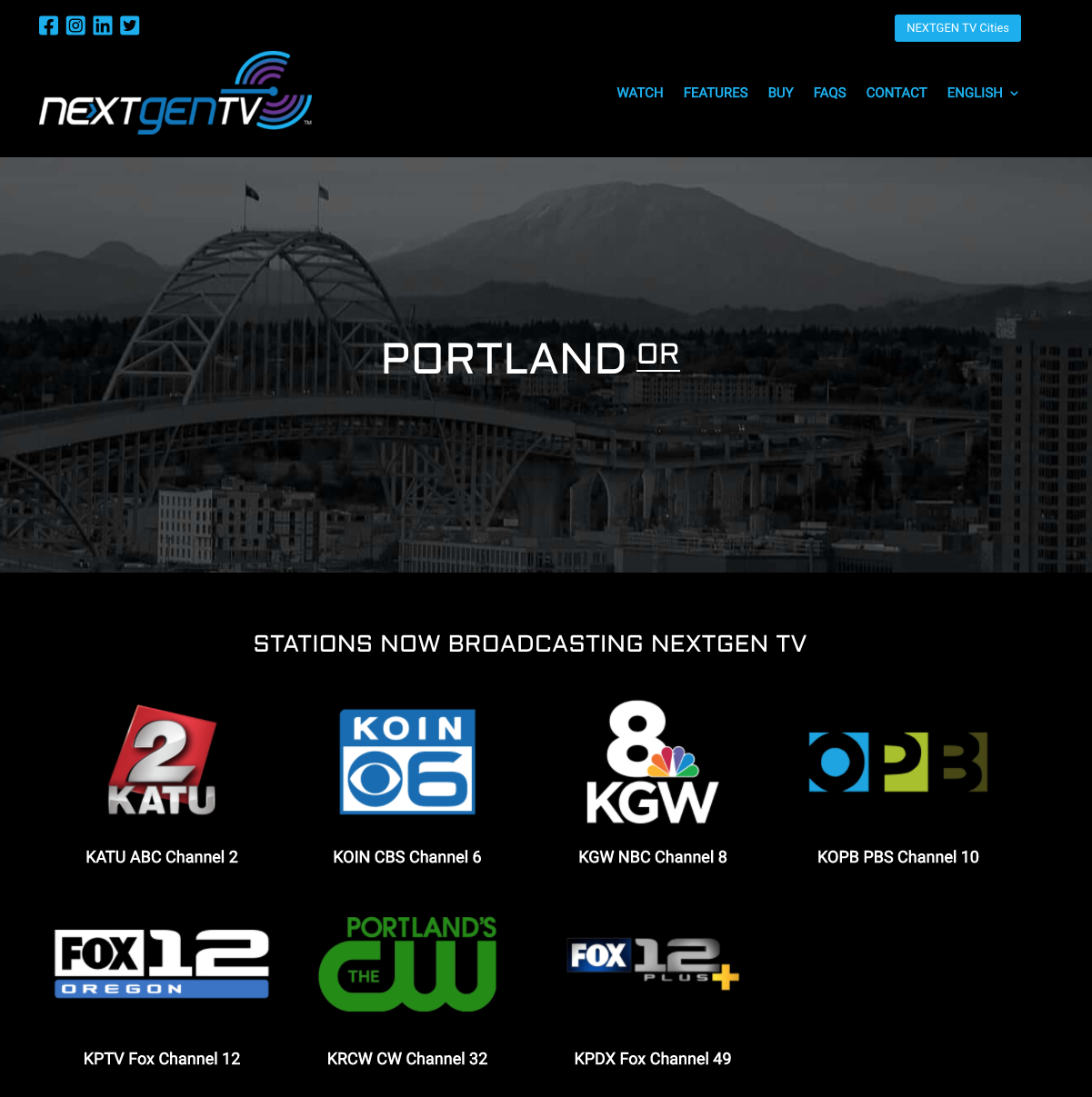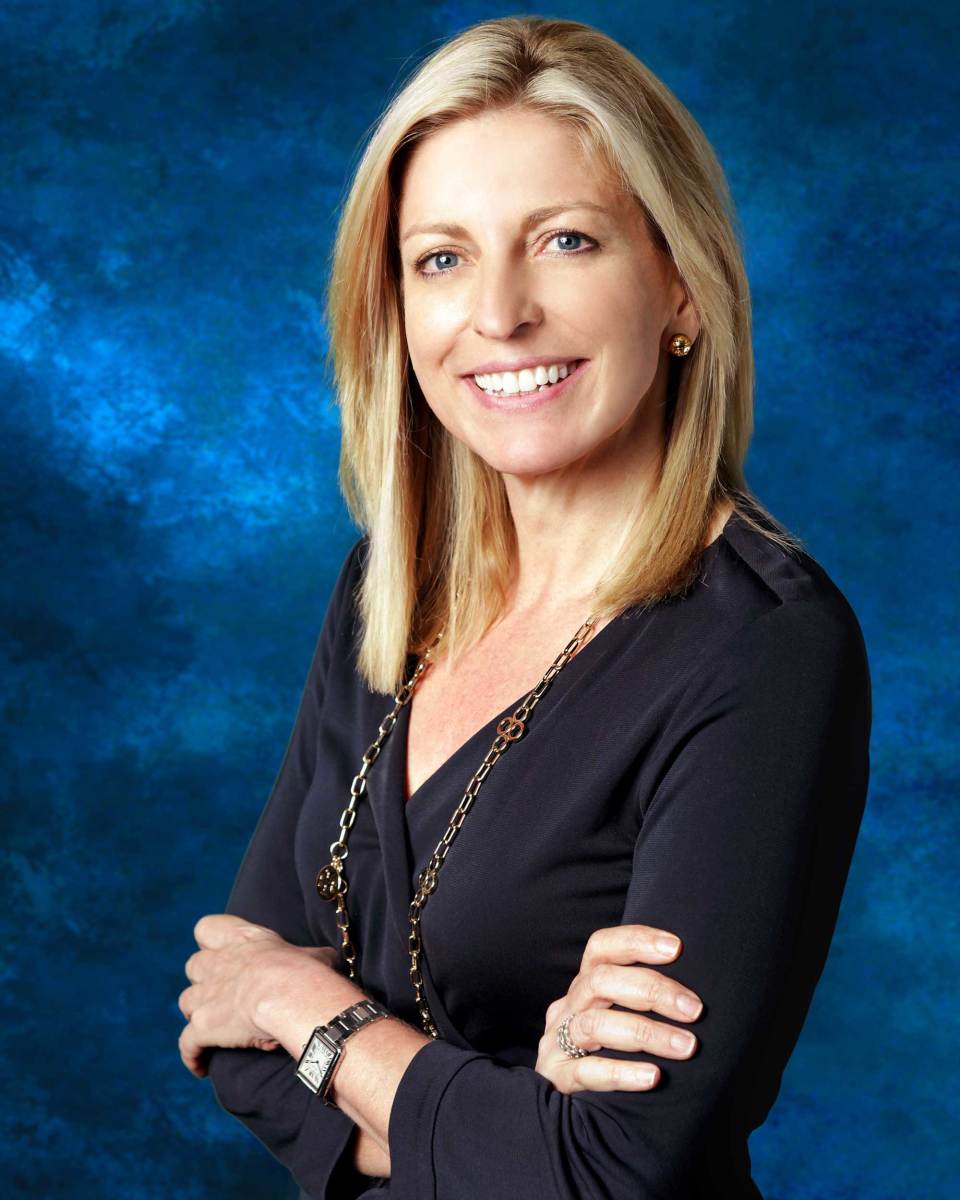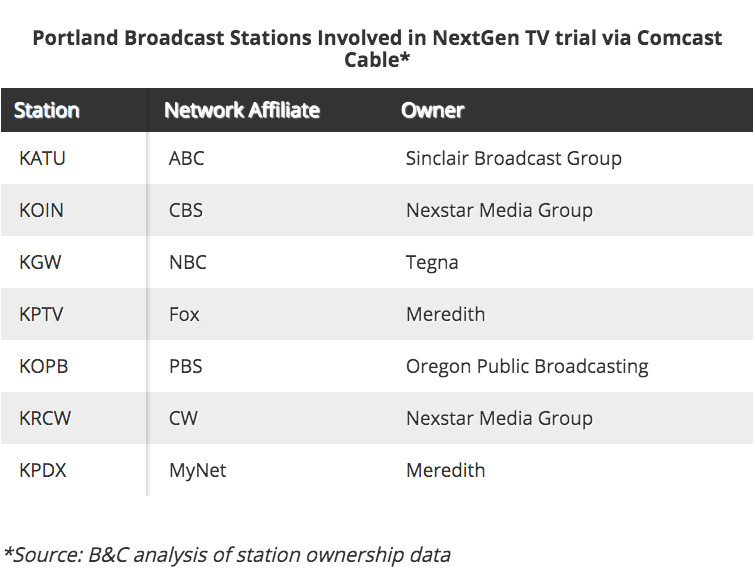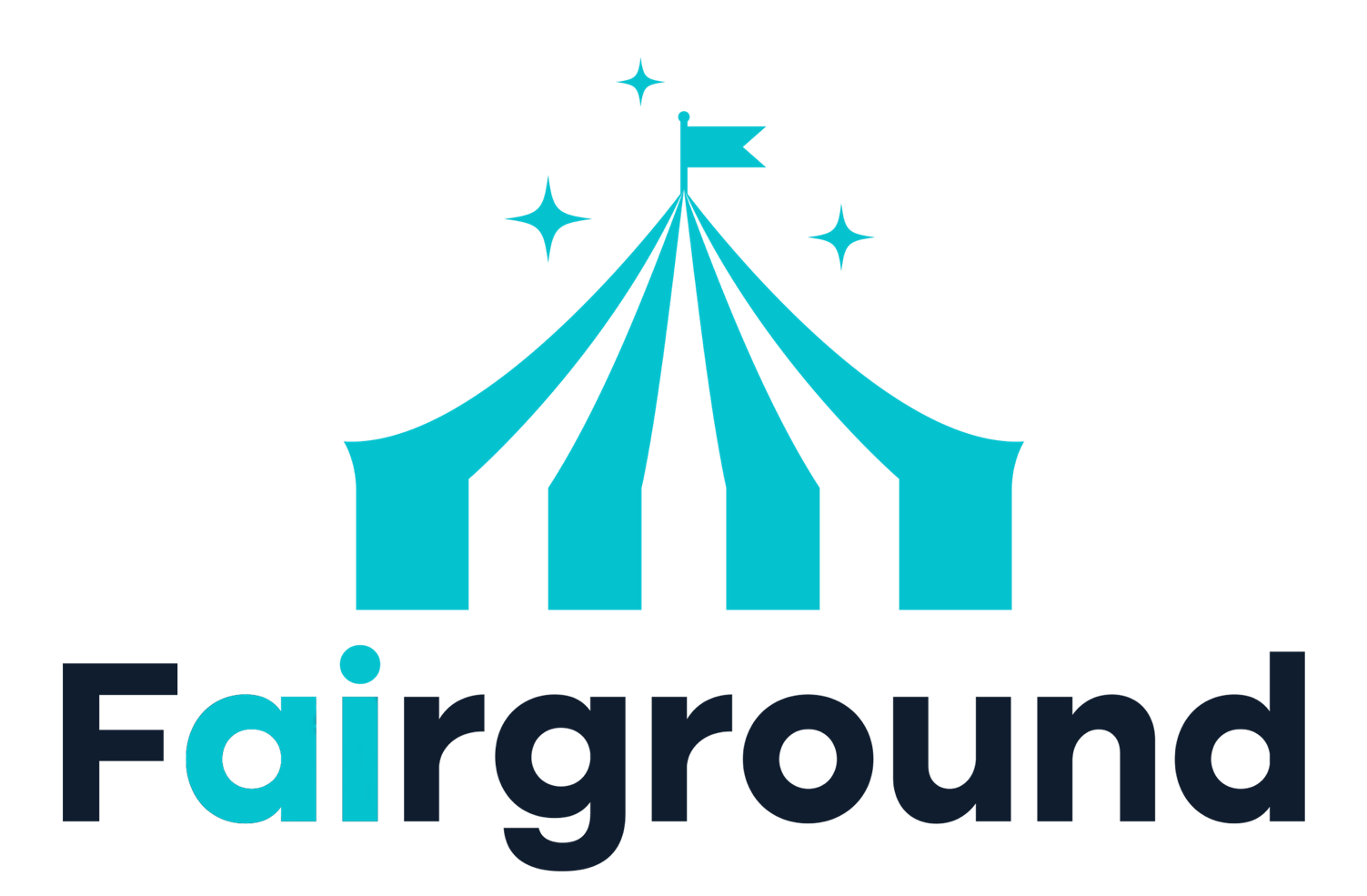Successful 'Technical Integration' at the Core of Year-Old Portland Test of Seven ATSC 3.0 Channels via Comcast
OTA tests expected to begin by late summer

The field trial in Portland, Oregon, involving Comcast’s carriage of seven local broadcast TV channels’ all-IP NextGen TV signals – still underway – is being deemed “successful.”
“We integrated” the ATSC 3.0 technology with the cable network, said Anne Schelle, managing director of Pearl TV, who has been overseeing the process to identify video, audio and data issues as well to help the Pearl consortium evaluate business factors.

The Portland trial is approaching the one-year mark, and Pearl TV, the consortium that’s managing the broadcast aspect, said it is generating valuable information for future technical integration of ATSC 3.0 signals via cable. Although both sides – Comcast and Pearl TV – decline to reveal specific findings of the project, Schelle said the process is “successful” in helping the Pearl TV consortium (nine broadcast groups, several of which own Portland stations) prepare for future rollouts.
The seven broadcast TV channels involved in the Portland NextGen TV project are KATU (ABC/Sinclair), KOIN (CBS/Nexstar), KGW (NBC/Tegna), KPTV (Fox/Meredith), KOPB-TV (PBS), KRCW-TV (CW/Nexstar) and KPDX (MyNet/Meredith) (see chart).

Schelle said that Pearl TV is “discussing the technical integration considerations” with CableLabs, Comcast, Cox, and other large MSOs for future implementations of NextGen TV via cable.
The Portland trial began barely a year after several prominent cable operators and industry groups challenged policies that would require cable to retransmit NextGen TV signals, especially if they duplicated conventional TV channels or offered premium services that exceeded traditional video retransmission or competed with cable’s advanced services.
Schelle characterized the goal of the Portland test as seeking “to develop standards that cable might reference through CableLabs, SCTE” and other industry groups. She said that Pearl TV selected Portland for its technical test site because so many broadcast channels had installed ATSC 3.0 transmitters and because Comcast was willing to cooperate on ways to explore use of its infrastructure.
Get the TV Tech Newsletter
The professional video industry's #1 source for news, trends and product and tech information. Sign up below.
“Comcast had facilities there that match up with” Pearl’s objectives, Schelle added, “and it had a team that was ready to go.”
Checking 4K, HDR Capabilities
Schelle said that Pearl TV has “been working on the transition with cable companies to make sure … [about] technical integration. Although she declined to reveal interim results, Schelle checked off a list of factors that are being evaluated, such as formatted video and High Dynamic Range (HDR) video (a key feature in 4K television).
By late summer, the group will begin testing over-the-air reception as well as fiber distribution of NextGen TV signals.
“We’ve been working with Synamedia [3.0 software provider] and others to make sure the decoders” operate successfully, Schelle explained, “to make sure we can get various formats working.” She expects that Pearl TV will run similar technical field trials with other MSOs, but did not spell out any timetable.
So far, the technical tests have not involved service delivery to cable customers. Schelle acknowledged that she has “no idea about how many Portland homes have 3.0 receivers.”
“These are early days,” she said, noting that Pearl TV is “working with manufacturers” to track actual sales. That will help all parties get a “general idea based on utilization of applications.” She said the Pearl TV participants will eventually be adding more features.
“There is value in these applications, such as emergency alerts, multilingual service [and] … rich-media alerting,” she said – emphasizing the potential enhancement for cable customers. “As we look at it, there will be applications that are seamless between cable and OTA, such as sports betting and shopping. We’ve developed an applications framework.” She describes the NextGen TV platform as one that will enable “opening up layers to applications developers. This “framework for enhancing content” has not been part of the Portland trial, which has focused until now strictly on technical factors.
Next on Pearl TV’s agenda – either in Portland or elsewhere – is determining how addressable advertising is compatible between NextGen TV and cable systems. Pearl TV plans to demonstrate its concepts at the NAB Convention in Las Vegas in October.
“We have to think about this in stages with the cable companies,” she said. “We’re working through the different technical aspects of integration… [including] ecosystems support.” The results of that process will “allow the business folk to have discussions when the time is right around business issues."
Republished from NextTV.
Gary Arlen, a contributor to Broadcasting & Cable, NextTV and TV Tech, is known for his visionary insights into the convergence of media + telecom + content + technology. His perspectives on public/tech policy, marketing and audience measurement have added to the value of his research and analyses of emerging interactive and broadband services. Gary was founder/editor/publisher of Interactivity Report, TeleServices Report and other influential newsletters; he was the long-time “curmudgeon” columnist for Multichannel News as well as a regular contributor to AdMap, Washington Technology and Telecommunications Reports; Gary writes regularly about trends and media/marketing for the Consumer Technology Association's i3 magazine plus several blogs.

